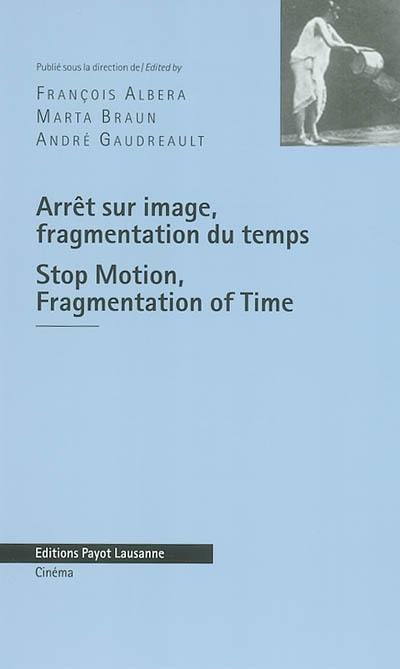
Fiche technique
Format : Broché
Nb de pages : 351 pages
Poids : 640 g
Dimensions : 14cm X 23cm
EAN : 9782601032987
Arrêt sur image, fragmentation du temps
aux sources de la culture visuelle moderne
Quatrième de couverture
L'histoire du cinéma ou de l'image animée ne se construit pas dans l'enchaînement des inventions et des expérimentations qui se succèdent en quelques décennies, elle se déploie au plan d'une histoire culturelle du regard qui appartient à la longue durée. «Le cinéma» s'y inscrit dans sa dimension anthropologique. Le XIXe siècle voit un formidable bouleversement des habitus visuels des sociétés industrielles, lié non seulement aux perfectionnements ou découvertes technologiques dans le domaine de l'optique, mais aussi aux découvertes astronomiques, aux redéfinitions des catégories de l'espace, du temps, de la vitesse. Adviennent, en particulier, les catégories de discontinuité et de fragmentation qui découlent de l'irruption de prothèses techniques et de dispositifs. La place de l'«observateur», du sujet, en est transformée et, avec elle, l'édifice même du savoir.
Arrêt sur image, fragmentation du temps s'interroge sur l'avènement du cinématographe dans ce contexte de la fin du XIXe siècle en tenant compte de cette généalogie scientifique, technique, spectaculaire ou culturelle dont il procède et qu'il transforme. Mais l'originalité des recherches proposées ici tient non seulement dans la mise à jour de nouveaux matériaux, l'exploitation d'une documentation inédite - touchant en particulier Muybridge, Anchütz ou Lumière -, mais encore à la démarche des auteurs.
Le point de vue s'est voulu ici «régressif» : «remontant» de la cinématographie à la chronophotographie via la «kinétographie», soit des années 1890 aux années 1880.
On assiste aujourd'hui à une réorganisation des données historiques, techniques, imaginaires liées à ce qu'on a coutume d'appeler «pré-cinéma» et, simultanément à une réactivation des problématiques et des procédures des machines et jouets optiques, tant dans l'approche des films telle que l'autorisent les nouvelles technologies de diffusion-réception que dans un certain nombre de pratiques artistiques contemporaines : de Bruce Nauman à Matrix, les problématiques de l'image successive sont rejouées, reformulées. Cette archéologie offre donc un des moyens de saisir ce qui se joue dans notre présent.
The history of cinema, or the moving image, is not a product of a series of inventions and experiments confined to a few decades ; it is, rather, a part of a cultural history of the gaze that extends over a much longer period. "Cinema" is a part of this history in an anthropological sense. There was a tremendous upheaval in visual practices in industrial societies in the nineteenth century, an upheaval that derived not only from technological discoveries or refinements in the realm of optics but also from astronomical discoveries and redefinitions of space, time, and speed. The role of the subject or the "observer," was transformed, and with it the very structures of knowledge. Stop Motion, fragmentation of Time is attentive to the contextual "intermediality" of cinema's late nineteenth century origins - the traditions of the popular performing arts and the scientific and technological framework within which cultural space was ordered. However the originality of this book is not only in the documentation and the new sources that are explored - in particular Muybridge, Anchütz or Lumière -, but also in the aim of the authors.
The diachronic view - tracing the Cinématographe back to chronophotography via the Kinetoscope, from the 1890s to the 1880s, from Lumière to Marey via Edison - is proclaimed as "regressive." Today we are witnessing a reorganisation of historical data and practices, both technological and artistic, dating from the period the "pioneers" of film history labelled "pre-cinema." Simultaneously, we have become aware of a renewed interest in optical devices and toys, both from the perspectives afforded by new technologies for disseminating and consuming cinema (videos, DVD, the computer), and from the number of contemporary artistic practices whose interest in the apparatus rather than the final product refers us back to the model of cinema. From Bruce Nauman to The Matrix, the logic of the moving image is engaged and reelaborated. This archeology offers a tool for understanding what is at stake in our time.





